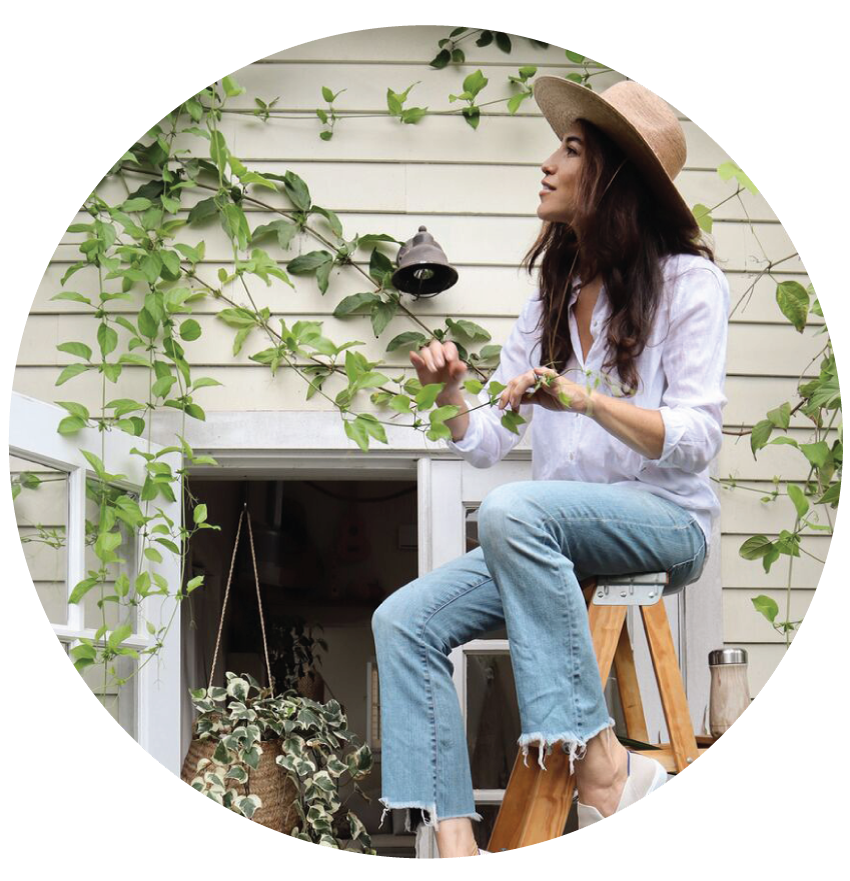Lower Waste Pet Goods
In recent years, one of the habits we’ve shifted the most drastically is how we select goods for our pups, StanLee and Sophee. For example, we’ve switched from food delivery services to preparing their meals here at home, and we’ve found bags, tools and accessories work well for our their needs as well as our evolving, greener lifestyle. As always, it’s a work in progress— we are constantly learning new information and pivoting accordingly. But the following is our current set of practices, coupled with a product roundup.
LINT BRUSH
After Sophee chewed up our last plastic lint roller (WHY, SOPH?!), I refused to buy another. We now use a wooden lint brush that effectively removes animal hair and lint from clothes and upholstery. It’s constructed from beechwood and natural rubber strips, then bound together with copper wire.
SHAMPOO
We don’t have to bathe the pups too often— a perk of the breed. But when we do, we have a pet shampoo bar that’s effective and virtually waste-free. It comes in compostable, minimal packaging.
WASTE BAGS
We use BioBags pet bags, which are 100% compostable. They’re also fragrance-free, not tested on animals, and packaged with minimal materials.
Our neighbor simply uses junk mail papers to pick up after her pup so she doesn’t have to buy anything new. This is clearly ideal for cutting back on waste and saving money. I tried it once, but it was just too tricky for me to use that method flawlessly when walking through the city with both pups and West.
DESHEDDER TOOL
A decade or more ago, I bought a deshedding brush for StanLee that works extremely well. Every time I do a pass through his coat there’s enough hair caught in the brush to make a new small animal. But this undercoat tool is (unfortunately) wrapped in plastic and rubber from the head to the handle. As such, I’m going to use it until the end of time. No point in swapping it out for something “greener” since I already have it.
BEDS
If you’re at all craft-inclined, a DIY pet bed stuffed with old clothes, towels and scraps presumably isn’t the hardest thing to make. (I’m a total disaster at such things.) But I stopped buying dedicated beds for the dogs. We use West’s old, washable baby blankets/mats for the pups here in the house, and outside they have wicker beds that we can cushion with any smaller blanket or pad. We have one P.L.A.Y. crate-liner style cushion, which was made from 100% recycled materials. That one washable mat sometimes sits on in the wicker bed, sometimes rests on the floor, and sometimes travels with us when we take longer trips in the car with StanLee and Sophee. (No sense in buying multiples if you’re trying to reduce your footprint.)
COLLARS
I wish I’d discovered Ike & Stella’s handmade, updatable collars years ago. They’re easy to refresh when parts begin to age or fray (meaning that they don’t have to be entirely discarded over the years). These sturdy leather-and-metal collars have removable (and sometimes washable) decorative + cushioned slide-on sleeves. I got collars and sleeves for both of the pups last year, and they’re definitely here to stay.
LEASHES
If you’re limited on storage space and wanting to avoid buying new plastics, handmade leashes are a good option. Plus they can be surprisingly pretty if displayed on your walls via hooks when not in use.
FOOD
In the past, we had food delivered for the pups, but the amount of waste it generated was just too much to bear. After first discussing a diet change with the Vet, Adam found a vegetarian recipe to prepare for the dogs. He makes it about twice a week, and stores the batch in the fridge. It includes olive oil, sweet pepper, zucchini, yellow squash, eggplant, egg, rice, cheese, beans, potato, or some combination thereof. (We also keep a tin of kibble in the bathroom, which we mix into Sophee’s dish.)
PET BOWLS
We’re currently using stainless steel mixing bowls for the pups since West broke all but one of the ceramic pet dishes when he was little and I don’t want to buy anything new. But there are many artfully crafted bowls available via Etsy.
TOYS
Adam and I sometimes upcycle worn-out, everyday items into games for the pups, but I’ll also admit that we do still buy new toys for special occasions via a discount retailer nearby. (Not ideal, I know.)
I’ve seen some great DIY dog activities online that don’t require anything new. My favorite find was a cupcake tin filled with tennis balls with a nibble hiding under (or within) one of the orbs. This clever little game will give your best friend a fun challenge to tackle before devouring his or her treat. (Although I myself have never tried it, as I’ve never owned a cupcake tin.)
Here, we sometimes opt for a basic water-soaked cloth left in the freezer and transformed into a cold, soft chew. This is particularly effective in cooling down the pups while also keeping them entertained during the hotter summer months.
Another easy DIY is the ol’ bottle-in-the-sock toy. We eliminated plastic bottles from our lives long ago, but they still randomly surface every now and then, whether via a guest or some unexpected chain of events. When that happens, we insert the empty bottles into a clean but tired old sock that needs to be retired, and this simple toy can keep one or both of our dogs occupied for a while. Ultimately, the bottle goes in the recycling bin. But only a small percentage of plastic is actually collected for recycling, so this isn’t something we do often.
















